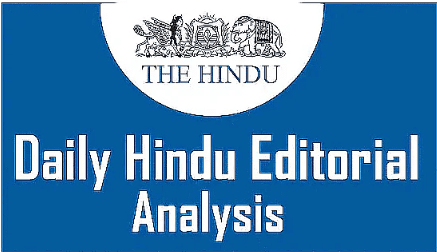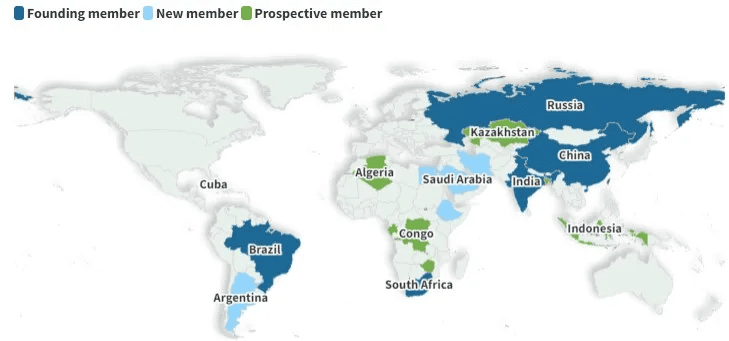UPSC Exam > UPSC Notes > Current Affairs & Hindu Analysis: Daily, Weekly & Monthly > The Hindu Editorial Analysis- 12th November 2024
The Hindu Editorial Analysis- 12th November 2024 | Current Affairs & Hindu Analysis: Daily, Weekly & Monthly - UPSC PDF Download

The LAC agreement, the Détentes and the Questions
Why in News?
Two weeks after the unexpected announcement of a peace agreement between India and China, Prime Minister Narendra Modi and Chinese President Xi Jinping met on the sidelines of the 16th BRICS Summit in Kazan on October 23, 2024.
- Their meeting marked a significant step towards resolving tensions, as evidenced by the exchange of sweets between the Indian Army and the People’s Liberation Army (PLA) at the Line of Actual Control (LAC).
- This gesture shows that both sides are keen to move past the difficulties experienced over the last four years.
- If they can truly set aside their differences, there are many important topics to discuss, including:
- Restoring peace at the border
- Ending economic restrictions imposed on each other
- Facilitating investments and visas
- Allowing direct flights between the two countries
- Increasing trade and other forms of interaction
Key Points of the Summit
- Strengthening Multilateralism: The declaration focuses on enhancing multilateral cooperation for just global development and security. It reflects a commitment to fostering peace, ensuring a fairer international order, and promoting sustainable development.
- Payment System: Russia highlighted the need for a BRICS-led payment system as an alternative to SWIFT, especially in light of Russian banks being cut off from this international financial network in 2022.
- West Asia Situation: The escalating situation in West Asia was also a point of emphasis during the discussions.
- BRICS Initiatives: The member nations agreed to explore various initiatives, including the BRICS Grain Exchange and the BRICS (Re)Insurance Company.
- BRICS Partner Country Category: The summit endorsed the creation of a BRICS Partner Country category, allowing other nations to collaborate with BRICS on various projects.
- BRICS R&D Vaccine Center: An announcement was made for the establishment of a BRICS R&D Vaccine Center to foster research in vaccine development.
- International Big Cats Alliance: India’s initiative to create an International Big Cats Alliance was recognized during the summit.
What is BRICS?
BRICS is a group of five big, fast-growing countries: Brazil, Russia, India, China, and South Africa. The name BRICS comes from the first letters of these countries.
- Origin of the Term: The term "BRIC" was first used by a British economist named Jim O'Neill in 2001 to highlight the potential of these emerging economies.
- Formation and Meetings: The BRIC group started holding annual meetings in 2006 during the UN General Assembly (UNGA) because of its growing importance. These initial meetings were successful and led to formal summits.
- Official Summits: BRICS countries have been meeting at formal summits every year since 2009.
- South Africa's Inclusion: South Africa joined the group in 2010, and the group then became known as BRICS.
- Expansion of BRICS: Recently, BRICS has expanded to include six new countries: Argentina, Ethiopia, Egypt, Iran, Saudi Arabia, and the United Arab Emirates (UAE).

- It unites five of the largest developing countries in the world.
- These countries together represent about 41% of the total global population.
- They account for approximately 24% of the world's GDP (Gross Domestic Product).
- These nations also contribute around 16% of the total global trade.

Significance of BRICS for India
- Strengthening South-South Cooperation: India sees BRICS as a platform to enhance teamwork among developing countries, helping to ensure their opinions are heard in major global organizations like the UN and the World Bank.
- Balancing Global Power:BRICS acts as a counterweight to Western-led groups like the G7. For India, this is important as it allows them to broaden their international relationships and lessen their reliance on Western nations.
- Trade Diversification:BRICS encourages economic collaboration, trade, and investments among its member countries.
- New Development Bank (NDB): This bank gives BRICS nations access to financial resources for infrastructure and sustainable development projects, which aligns with India's goals for growth.
Challenges
- Different Priorities: India is worried about terrorism and border security, while other BRICS countries like China and Russia might focus more on their own regional interests.
- Geopolitical Rivalry: China’s growing influence in BRICS, especially with new members like Iran and Saudi Arabia, raises concerns for India. There is a fear that BRICS might become more pro-China.
- Complex Middle Eastern Relationships: The inclusion of Iran, Saudi Arabia, and the UAE in BRICS complicates India’s relationships in the Middle East.
- Trade Barriers: There are still intra-BRICS trade barriers such as tariffs, regulatory differences, and currency issues. These barriers limit India’s ability to fully benefit from trade opportunities within the group.
Way Ahead
- India's participation in BRICS is vital for both its national interests and for influencing global governance in a rapidly changing geopolitical landscape.
- As a founding member, India has played a significant role in ensuring that BRICS remains a platform for emerging economies to collaborate and assert their influence globally.
- BRICS offers India a unique chance to diversify its trade networks, attract foreign investments, and engage in joint infrastructure and development projects.
- To maximize these opportunities, India should strategically use the resources of the New Development Bank (NDB) to finance critical projects that align with its long-term growth objectives.
The document The Hindu Editorial Analysis- 12th November 2024 | Current Affairs & Hindu Analysis: Daily, Weekly & Monthly - UPSC is a part of the UPSC Course Current Affairs & Hindu Analysis: Daily, Weekly & Monthly.
All you need of UPSC at this link: UPSC
|
38 videos|5258 docs|1111 tests
|
FAQs on The Hindu Editorial Analysis- 12th November 2024 - Current Affairs & Hindu Analysis: Daily, Weekly & Monthly - UPSC
| 1. What is the significance of the LAC agreement in current geopolitical contexts? |  |
Ans. The LAC agreement plays a crucial role in defining the Line of Actual Control between countries, particularly in the context of India and China. It aims to establish clear boundaries to prevent military confrontations and promote diplomatic dialogue, thereby contributing to regional stability.
| 2. How have Détentes influenced international relations historically? |  |
Ans. Détentes refer to the easing of strained relations, particularly during the Cold War. Historically, they have played a vital role in reducing tensions between superpowers, fostering negotiations, and establishing frameworks for arms control, which have significantly impacted global peace efforts.
| 3. What are the main challenges in implementing the LAC agreement? |  |
Ans. The main challenges include differing perceptions of territorial boundaries, historical grievances, and military posturing by involved nations. Additionally, the lack of mutual trust and effective communication can hinder the successful implementation of the agreement.
| 4. How do current Détentes compare to those of the past? |  |
Ans. Current Détentes often involve multilateral engagements and economic interdependencies, contrasting with the bilateral focus of past efforts. Modern Détentes also address a wider range of issues, including cybersecurity and climate change, reflecting the complexities of today's global landscape.
| 5. What role does the media play in shaping public perception of the LAC and Détentes? |  |
Ans. The media plays a significant role by informing the public about developments related to the LAC and Détentes, influencing opinions and government policies. Through analysis, reporting, and commentary, media can either exacerbate tensions or promote understanding, thus affecting diplomatic relations.
Related Searches
















